Foraging and brewing with green hops
We’ve been following this year’s hop harvests very closely, and we got inspired to try making a beer from the hops that grow wild around us!
Free hops, anyone?
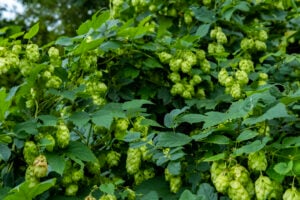
Of course, the majority of hops in the UK are grown commercially – and we stock the very best we can source from hop factors (an industry term for “wholesale hop sellers”) including Charles Faram and Brook House hops.
But hops grow wild all over the UK. While commercially grown hops are trained along tall poles to help them grown, in the wild, hops are typically found in hedgerows. As a climbing plant, they twist between the other plants in the hedge and help give it structure. This creates a wonderful habitat for small birds as well as pollinating insects.
So if you fancy a ramble, you might find a source of free hops close to your own home. And hops picked straight from the bine – “green hops” or sometimes “wet hops” – give a wonderfully fresh flavour that just has to be tried!
Fantastic hops and where to find them
The most common areas for finding wild hops in the UK are close to the major hop growing regions: Herefordshire, Worcestershire, and of course, Kent. But we’ve heard of people finding hops in Scotland, Wales, and just about everywhere else in the UK.
Hops are easily identified by the flowers of the female plant, which form into the layered cones we’re used to seeing. Male hop plants don’t produce such tight cones so you can ignore these.
Before you start picking hops, make sure you’re not on someone else’s private land, or if you are, that you have permission to forage.
It’s also best to pick from hedges that are away from traffic or farmland that has been sprayed with pesticides. If the hedge is near a road, work from the opposite side, away from the traffic – it keeps you safe while foraging and means there’s less exhaust pollution in the hop flowers.
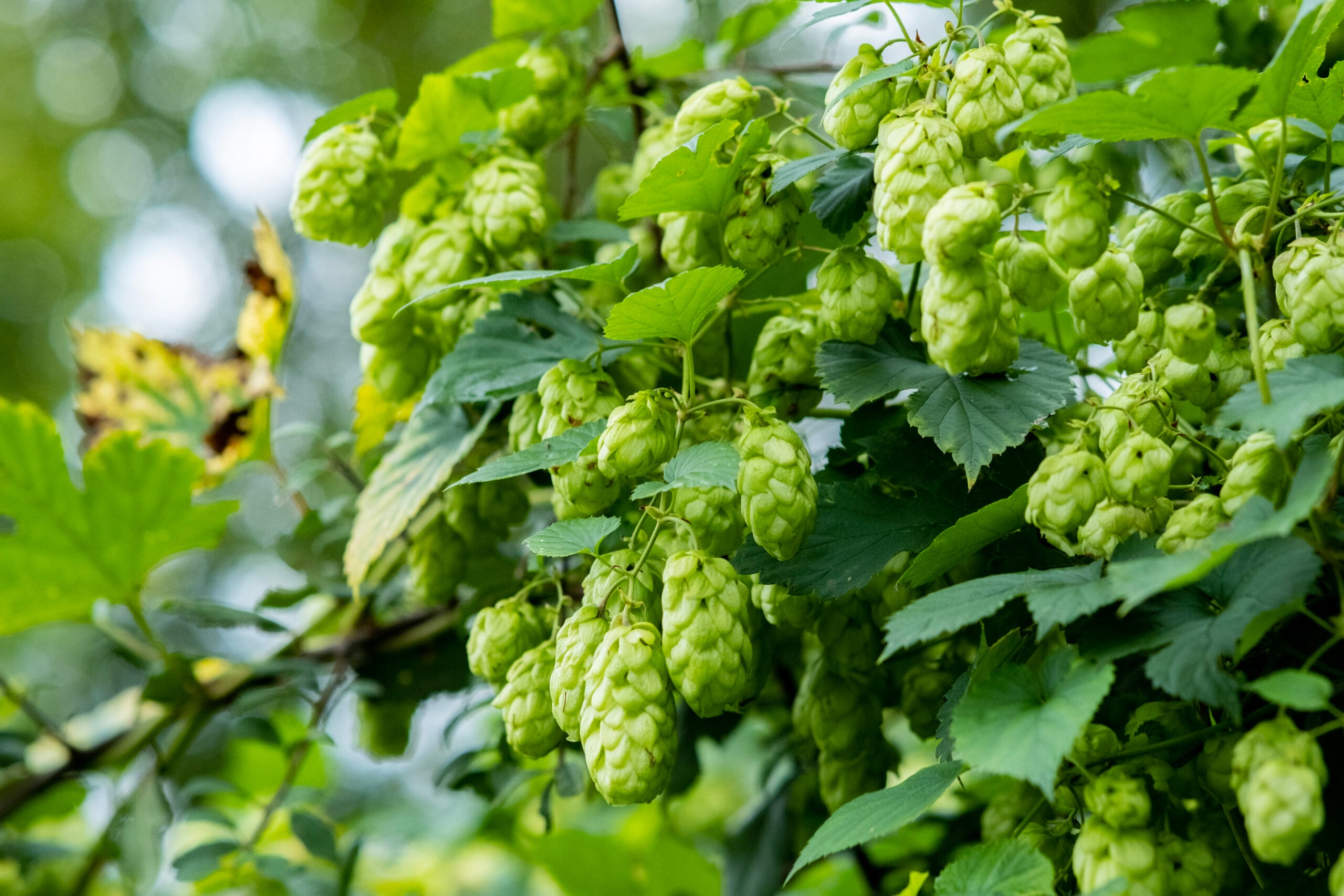
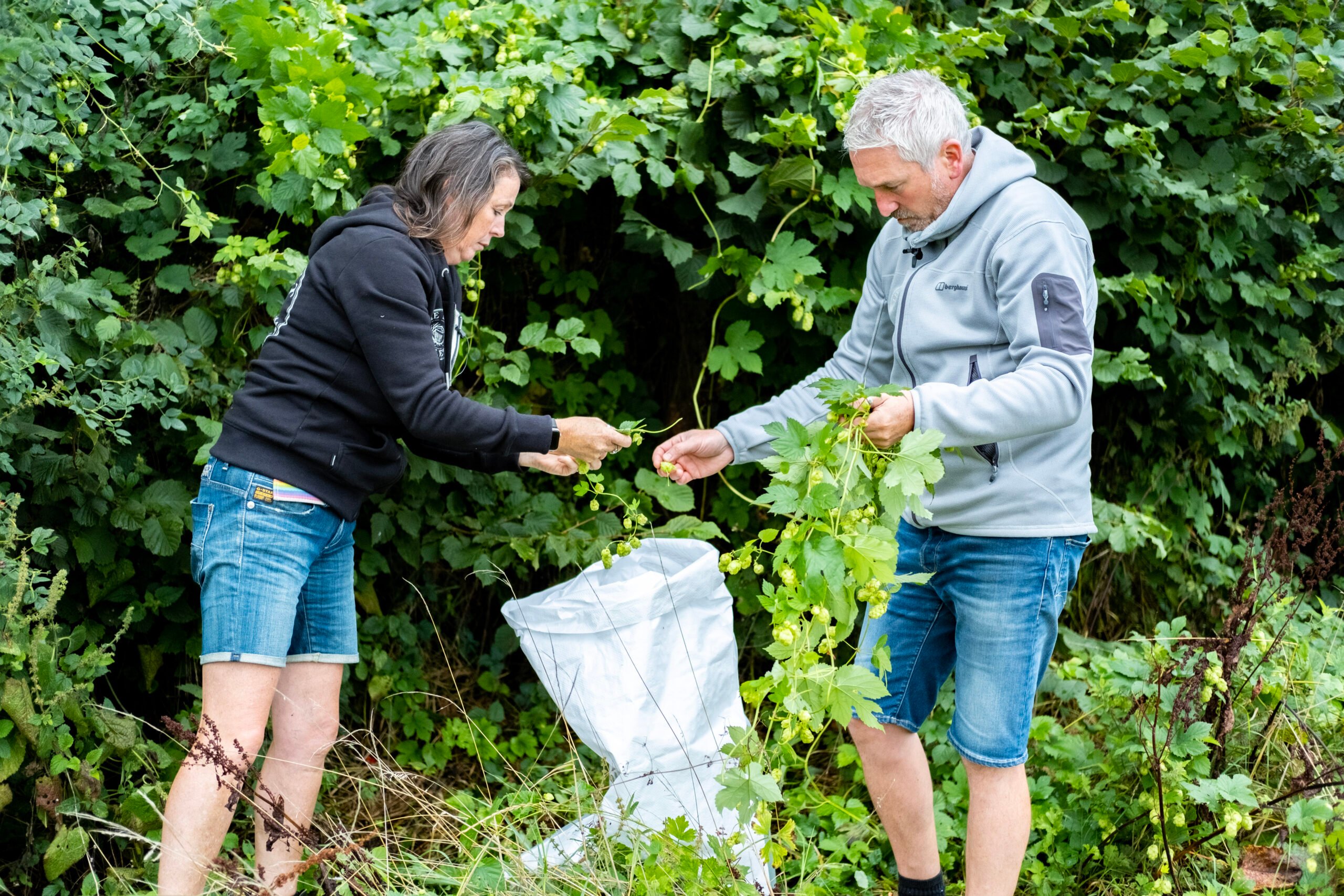
There’s the rub
The best time to harvest hops is in September, when they will typically be at their ripest, but depending on the weather that season you might see ripe cones earlier or later.
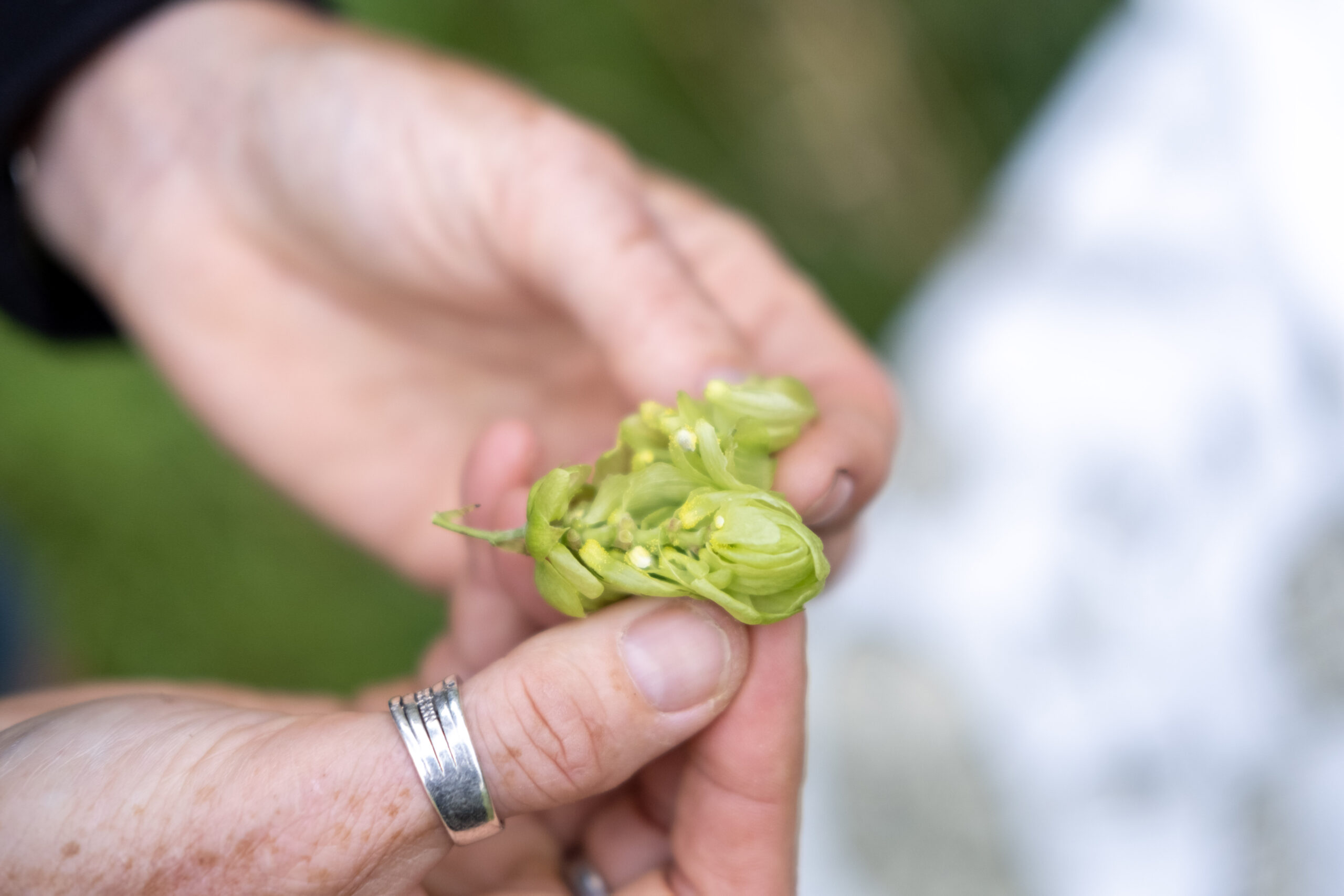
There are a couple of ways to check your hops are at their peak. A ripe cone should be quite “crunchy” in your hands – almost like a packet of crisps. With many UK varieties, you’ll also see a small petal at the tip of the cone. This is called a “lamb’s tongue” and is only found on ripe hops. Not all varieties display this, though.
You should also rub the hops in your hands. A ripe hop will feel sticky and oily on the rub, with a floral or herbal smell. Onion or garlic aromas and fully brown cones means they are overripe, while yellow cones with a grassy aroma are underripe.
Identifying varieties
There are dozens of varieties of wild hops, including many that aren’t grown commercially any more, as well as natural hybrids and crossbreeds. It’s simplest to embrace not knowing exactly what variety you have and just go with it – if it smells good, you can brew with it!
Saying that, you might be able to identify certain common varieties by looking at the colour of the thin stems and leaf stalks (technically called “petioles”) and the thicker main branches (“bines”). Fuggles will have a green bine with red petioles, while Goldings have distinct red “pinstriping” on their petioles.
All hops have green cones. If you see small red berries on what looks much like a hop bine, you probably have white bryony, which is poisonous and should not be harvested.
When picking, avoid getting too much thick branch, but some stems are okay. The cones are what you really want!
Don’t worry about any small bugs or insects that might be on the hops. We suggest you use the hops in a 80°C whirlpool addition, and at this temperature, the wort pasteurises in under 15 seconds, killing any nasties. The oils that the hops release reinforce this effect – hops contain naturally bacteriostatic compounds, which means they stop bacteria from growing.
You’ll want to gather quite a lot of cones – approximately five times the weight of shop-bought hops. More on quantities and how to use your foraged hops below!
Green hop brewing
When putting together a recipe, we usually need to know the level of alpha acids in the hops so we can calculate how much bitterness they will give. This level is calculated through some clever chemistry and isn’t particularly easy to do at home.
This means that with foraged green hops, we won’t know how bitter they will be. So it’s simpler to keep them for a whirlpool addition, where we’ll also get the most of the fresh flavours and aromas – win, win! As mentioned above, we suggest adding the green hops at around 80°C.
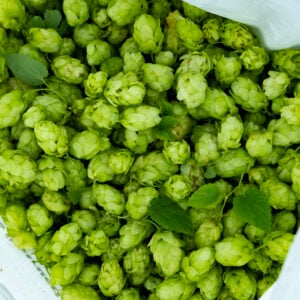
You’ll need about five times the weight of green hops compared to shop-bought dried hops. If your recipe calls for 100g of dried whole cone hops, you’ll need 500g of green hops. Pellets are more concentrated than dried whole cones, so you usually need less weight of pellets, but you can replace them at the same 1:5 ratio with green hops – the freshness of the green hops makes up for the difference in concentration.
Putting such a large quantity of whole hops into your brew means you need to watch out for valves getting blocked – a filter on your valve outlet is a good idea. If you’ve got a Grainfather, you could wash out the grain basket after the mash, then use it as a giant hop spider! You could also use a large grain bag to hold the hops. This makes removing them and cleaning up after the brew much easier, as well as reducing the risk of blockages.
You can use green hops in any style of beer you want, but we think wild UK hops suit traditional British styles best. Golden ales and best bitters work really well, as do ESBs – or why not go completely wild and brew a fruited beer? There are plenty of blackberries, sloes, and wild plums (“bullaces”) to be found in those hedgerows…
Check out our video where we forage green hops and use them to make a celebration ale! And remember to subscribe to our YouTube channel for all the latest brews and reviews from The Malt Miller.

